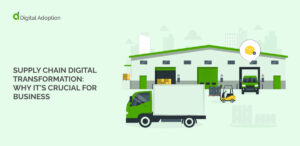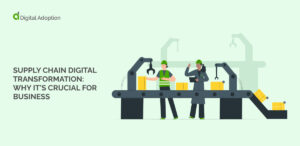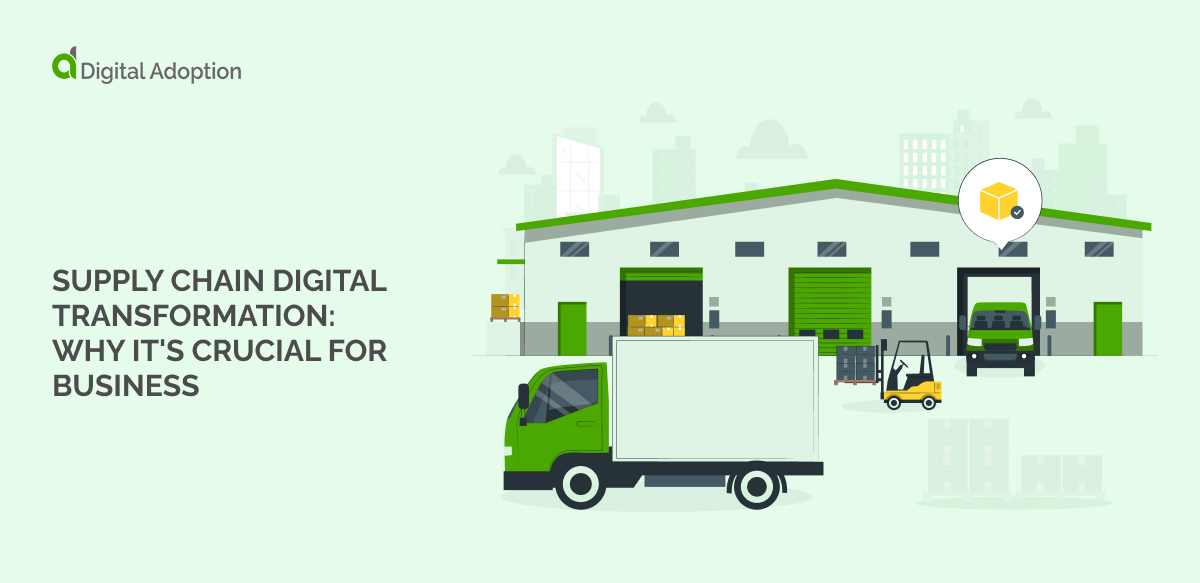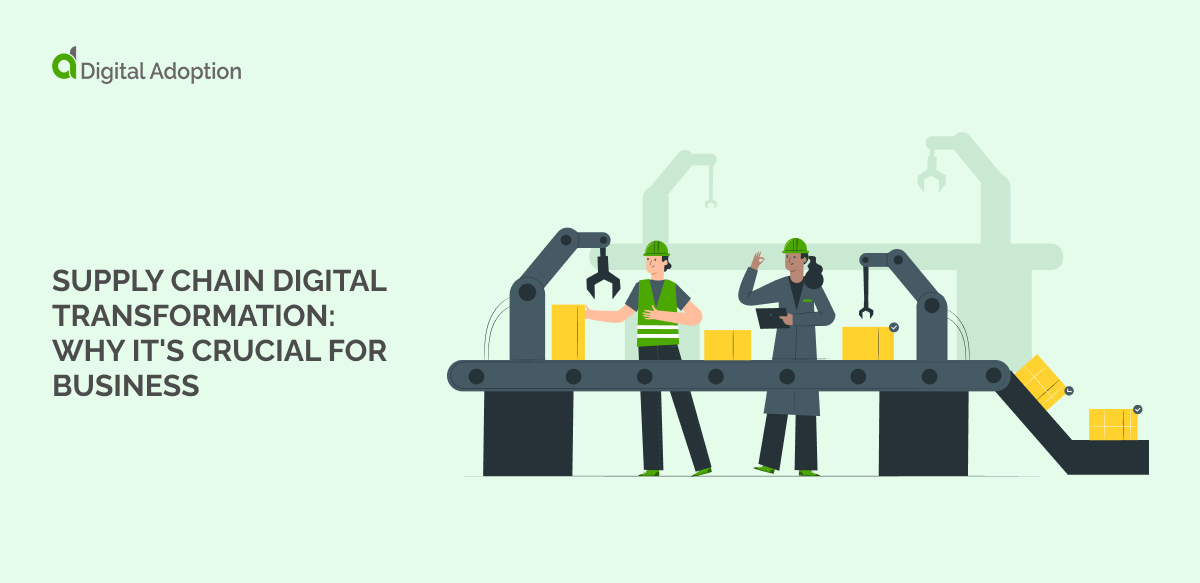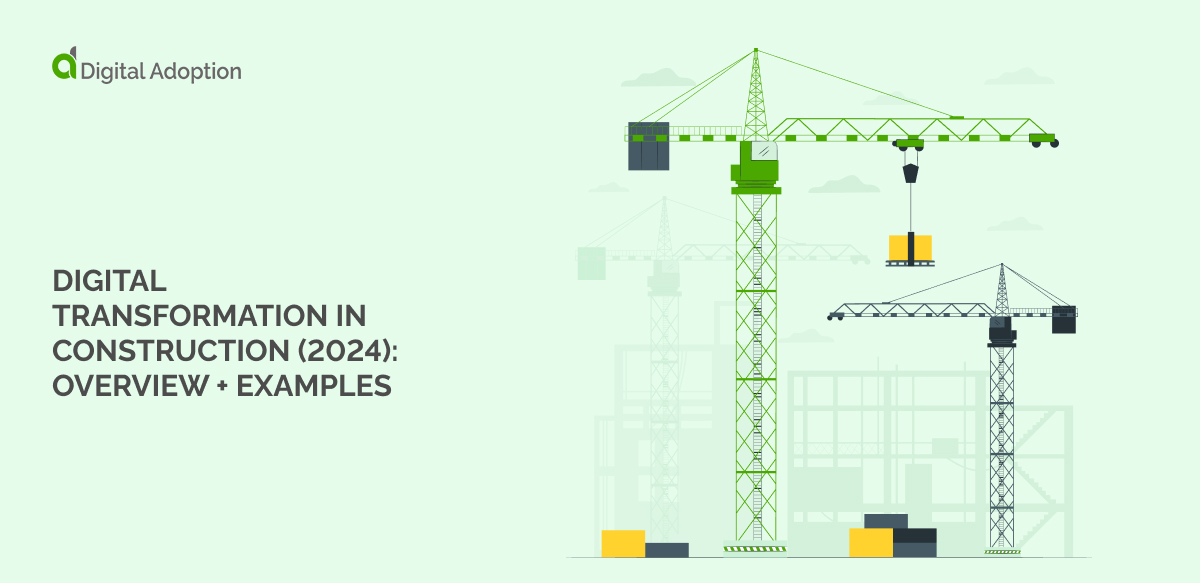Employee frustration can be a severe obstacle in any business endeavor, from change management to product adoption to digital transformation.
In this guide, we will learn everything there is about employee frustration and how to solve it.
Additionally, we will discover:
- Other negative sentiments that can depress organizational performance
- A step-by-step process for minimizing employees’ negative emotions
- How the employee experience affects employee sentiment
- Strategies for improving the digital work experience
And much more.
Let’s begin by looking at employee sentiments in detail, both positive and negative.
To Minimize Employee Frustration, Start by Understanding It
Employee frustration has a negative impact on the workforce’s productivity and performance.
However, it is important to understand that frustration is just one of several possible employee sentiments.
In order to better understand employee frustration – and learn how to handle it – it is a good idea to understand these emotions.
We’ll start with a look at negative employee emotions, which are the ones businesses should try to prevent and minimize as much as possible.
Several Common Negative Workplace Sentiments
There are a number of negative employee sentiments that can contaminate a work environment, such as:
- Frustration. Employee frustration can be a productivity killer, and it can stem from numerous causes. These can include problems with the work environment, poor management, a poor digital employee experience, and more.
- Stress. Stress, of course, is common in many jobs. And it is certainly not possible to prevent stress completely, but it can be mitigated and reduced. Those reductions, in turn, can have a positive effect on the workforce and the work environment.
- Fear. Fear is a very deep emotion that often gives rise to many of the other sentiments covered here, such as stress and anger. There are different types of fear that arise from different sources. During digital adoption, for instance, fear of incompetency can give rise to anxiety, stress, and frustration – these, in turn, can depress productivity and performance.
- Anger. Another reaction that organizations should prevent and minimize is anger. Like the other sentiments covered here, anger can arise from several causes, including the workplace, ineffective management, poor leadership, fear, and so on.
These are not the only negative employee sentiments to be aware of, but they are some of the most common.
They can give rise to a number of negative impacts to the workforce, which we’ll look at next.
How Negative Employee Emotions Can Hurt the Organization
The sentiments covered above can harm the workforce in many ways, causing harm to:
- Productivity. A frustrated workforce, for instance, will be less productive than a satisfied workforce … regardless of the source of that negative emotion.
- Engagement. Any negative emotion will negatively impact engagement levels. And workers who are less engaged will be more likely to look for other job opportunities, less likely to perform in the workplace, and less likely to contribute to the organization’s misison.
- Proficiency. Disengagement and negative emotions can also interfere with employee learning. A worker who is frustrated and dissatisfied with workplace training, for instance, will put less effort into learning new things. And, as a result, their skill levels will be more likely to stagnate.
- Retention. Another natural consequence of frustration and other negative emotions is lower employee retention. And this makes sense … after all, if workers don’t have positive feelings towards their workplace, then they will have little reason to stay.
- Climate. Employers should also understand that negative employee sentiments can impact the work environment itself. Unchecked negativity can create a feedback loop and contaminate the climate, atmosphere, and culture of the organization … which, in turn, can breed more negativity.
It is important to evaluate and minimize these negative emotions as much as possible.
Below, we will discuss several strategies for doing just that.
But before we do, let’s look at the positive effects associated with positive employee emotions.
Examples of Positive Employee Sentiments
As with negative emotions, there is a range of positive emotions that can enhance the work environment.
A few of these include:
- Satisfaction. Employee satisfaction occurs when employees enjoy their work, their work environment, the coworkers, and so forth.
- Motivation. Higher motivation levels are associated with – and often used synonymously with – many of the other sentiments covered here. Motivated workers are happier, more ready, and more willing to work than those with low motivation levels.
- Enthusiasm. Enthusiasm is a positive emotional attribute that fuels employee success and keeps workers engaged.
- Engagement. Though engagement may not strictly be considered an emotion, it is closely linked to the positive sentiments covered here. And because engagement directly leads to productivity, performance, and other positive workplace effects, it is a central point of focus for many organizations.
This list is certainly not comprehensive, but it can offer some examples of sentiments to strive for.
It is certainly possible to create business programs that minimize workplace negativity.
However, as we’ll discover later, it is often better to set positive goals and aim for those. After all, improving employee sentiments will automatically decrease many of the negative ones covered above.
The Positive Impacts of Positive Sentiments
Positive emotions such as those listed can have a number of positive effects on the work environment, enhancing areas such as:
- The employee experience. The employee experience includes every interaction an employee has with his or her work environment. Those interactions can be managed, to an extent, by the organization itself. But employee sentiment can also impact that experience.
- The workplace climate and culture. Positive attitudes and emotions will have the opposite effect of negative ones. When employees are engaged and enthusiastic about their work, for instance, they will contribute to the creation of a happy, satisfying work environment.
- Workforce performance. Positive emotions engage workers, which improves employee productivity and performance.
- Organizational performance. Improvements to an individual worker’s performance positively impacts the performance of that worker’s business unit. And, ultimately, when individual worker performance increases, those performance gains trickle up to positively impact the organization’s performance.
There are certainly other benefits associated with positive worker emotions.
However, this list can offer a few key benefits to strive for.
Before exploring some ways to achieve those aims, however, let’s explore employee frustration – and other negative sentiments – in greater depth.
An Employee Frustration FAQ: Understanding the Ins and Outs of Negative Employee Emotions
There are a few questions that commonly arise when dealing with negative emotions in the workplace, such as:
What are the causes of employee frustration and other negative emotions?
As mentioned, the causes of employee frustration can vary.
Negative emotions can, for instance, be traced to:
- Poor management. Poor management, according to Gallup, can lower motivation, decrease productivity, and more.
- Ineffective leadership. Leadership is equally as important as management. And though this term is sometimes used interchangeably with management, there are differences – leaders provide drive, propel movement, inspire, and more. Poor leadership, like poor management, can also increase employee frustration or other negative sentiments.
- Ineffective employee training programs. When employees lack the skills they need to succeed, frustration is a natural result. And, as we will see later, this can impede workplace efficiency, digital transformation, and more.
- Obsolete tools and technology. If workers don’t have the tools they need to accomplish their jobs effectively, then this can also become another permanent cause of frustration. Like the other problems mentioned here, that frustration can contribute to lower productivity, performance, and more.
- A bad work environment, culture, or climate. The work environment itself plays a critical role in employee sentiment. A bad work environment – from the physical environment to the digital environment – will have a permanent effect on the atmosphere of the workplace, affecting employees’ attitudes, motivation, and so forth.
- Inefficient business practices or processes. Business process efficiency is yet another factor that can influence employee sentiment. When day-to-day activities are difficult to accomplish, expect morale to lower, while frustration mounts.
These are just a few of the many examples of the causes of negative emotions.
Because the causes of employee frustration can vary so greatly, each organization should assess its own circumstances.
Those assessments, as we will discover later, are essential in order to understand, address, and improve employee emotions.
What can be done about negative employee sentiments?
Once organizations understand the root causes of frustration and negativity in the workplace, it is possible to create a plan for change.
That plan will involve:
- Identifying the root causes of negative employee emotions
- Developing a strategy and an action plan for fixing those problems
- Implementing necessary organizational changes
- Managing and leading those change projects effectively
- Measuring the initiative’s results and optimizing as needed
As with any other business project, it is important to view these change projects as investments.
And, as with any other investment, it is important to weigh the costs, risks, and benefits before embarking on that project.
What are a few examples of ways to minimize employee frustration?
Let’s take a look at some examples of how an organization might address employee frustration and negativity:
- An organization pinpoints poor management as a major cause of employee frustration, then decides to begin a leadership development program to improve its managers’ leadership skills
- Employees’ lack of digital skills cause a range of negative sentiments in a business, from frustration to stress, so the organization decides to implement new digital training programs
- Disengagement in a workplace is traced to a lack of meaningful work, leading the business to proactively communicate how individual workers’ duties positively impact the customers
Of course, these are just hypothetical examples.
However, they should illustrate a few ways in which organizations can tackle frustration and negativity in their own work environments.
See below for a step-by-step approach for diffusing workers’ tension and improving the work environment.
Who should address employee frustration?
HR will often bear the brunt of the burden when managing and minimizing employee frustration levels.
However, different parties may also be involved with the efforts, depending on the nature of the solution.
For instance:
- If frustration stems from the digital work environment, then digital adoption managers, training managers, and IT may take a hand
- If employees are dissatisfied with managers, then leadership development consultants may also get involved
- If employees are frustrated because they don’t fit with the workplace culture, then HR may choose to adjust its recruitment and onboarding process
Just as the solutions to employee frustration will depend on the cause of that frustration, the team members assigned to implement that solution will also vary.
In order to develop an appropriate solution – and assign the appropriate team members – it is important to take a methodical approach when designing organizational changes.
Next, we will look at how to do just that.
A Step-by-Step Process for Minimizing Workplace Frustration
Let’s discover how an organization can implement changes that address and reduce frustration, before it interferes with organizational performance.
1. Identify the causes of frustration and other negative sentiments.
Understanding the true nature of the problem is the first step to fixing it.
Like any other business process, improving employee sentiment should be built upon actual data, input, and feedback.
For that reason, organizations must perform assessments that target areas such as:
- The work environment. The work environment can include the physical work environment, physical tools and equipment, as well as digital tools.
- The workplace culture. The culture of the business represents the values, assumptions, and beliefs of the organization.
- The digital workplace. Today, it is important to assess and understand how digitally mature the workplace is.
- The employee experience. The employee experience encompasses every interaction that an employee has with the organization, including those covered above.
There are several ways to collect and assess this information, such as employee surveys and software usage data.
Naturally, these assessments will be based on hypotheses and assumptions. Their purpose is to validate those hypotheses and identify the actual causes of employee frustration.
2. Strategize.
With the information collected above, it will be possible to design a strategy that is user-centered and data-driven.
Potential strategies can revolve around, for instance:
- Employee experience improvements. If assessments reveal that certain stages in the employee life cycle are sources of employee frustration, for instance, then it is wise to address those when developing improvement strategies.
- Digital transformation. When assessments demonstrate inefficiencies and frustrations that stem from the digital component of the workplace, it would be wise to consider transforming the business in order to remove and reduce that frustration.
- Cultural transformation. At times, the organization’s culture can become a source of frustration. If new hires aren’t the right fit for the company, for instance, HR should revise its hiring practices. Or if the business strategy is at odds with the organization’s culture, then it may be wise to transform the culture itself.
- Digital adoption. When training is ineffective or inefficient, it can leave employees unskilled and frustrated. To tackle this obstacle, organizations should implement strategic digital adoption programs that keep the workforce in sync with the organization’s digital technology and strategy.
Each of these strategic directions will naturally result in a different solution, which is why it is important to develop action plans and teams specific to that plan.
3. Create an organizational change plan.
Building upon the earlier assessments and strategies, next it is time to create an actual project plan.
Inevitably, addressing and fixing sources of employee frustration will require some sort of organizational change.
These changes can be large or small.
But regardless of the scale of those changes, it is important to plan for and manage those changes carefully.
Such plans should include:
- A stage-based roadmap. Each stage in the project plan should include a set of goals, a deadline, a description of the stage, and so forth. Ideally, this roadmap can be used as a reference document to keep all parties in sync.
- The right teams. Teams should be assigned based on the needs of the project and the team members’ specializations. A strategy that focuses on improving the digital workplace, for instance, can include IT personnel, HR staff, employee experience managers, and so forth.
- Clearly defined goals. Every stage should have a specific, achievable goal. Vague goals, such as “Decreasing employee frustration” cannot be measured. Instead, employee surveys and data should be used to quantify and track those sentiments.
- Metrics and KPIs. Metrics and KPIs will help organizations track progress and measure the health of the project. They should be directly linked to the program’s goals, as mentioned above.
- Deadlines. Naturally, every project should have a timeline. And each stage of the roadmap should have a deadline. Those deadlines can help compel workers to perform their duties and ensure that projects stay on track.
- Systems of accountability. Another way to ensure that programs stay on track is by developing systems of accountability. Each team member should have a clearly defined set of responsibilities, and mechanisms should be set in place to ensure that they complete their tasks.
Like any business project, organizational changes aimed at reducing employee frustration require careful management, leadership, and optimization.
4. Implement and optimize.
The larger the change project, the more important it is to implement formal change management practices.
Here are a few tips that can help ensure these projects stay on track:
- Perform test runs. Pilot testing a change program, such as an employee experience improvement program, can offer early data that can inform later decisions.
- Refine the approach. Using data received from the pilot test, adjust the project before full-scale implementation.
- Enlist the support of change advocates. Change advocates are “champions of change” who can act as leaders on the ground, training coworkers, mobilizing teams, and so forth.
- Roll out changes across the organization. After pilot tests are complete – and after teams and team leaders have been assigned – implement the change project organization-wide.
- Continually measure and optimize. During and after implementation, pay close attention to the progress, measuring and optimizing as necessary.
Optimization is essential for any business improvement project.
After all, no process is perfect right out of the gate.
Even after the targeted results have been achieved, however, it is important to continue making adjustments. Since the business itself, the work environment, and the workforce keep changing, it is necessary to adapt and stay agile.
Today, one of the most fast-paced areas of change is digital technology.
For that reason, organizations should pay close attention to the digital workplace and the digital experience.
The Importance of Enhancing the Digital Employee Experience
Digital adoption is a business function that offers a number of benefits to organizations, including:
- Streamlining the digital workplace. Today’s workplace is digital. In some cases it is more digital, in some cases less. Either way, it is important to close the digital gap between workers and their tools, integrate fragmented workflows, and maximize efficiency. This is especially true since today’s organizations are undergoing continual digital change and transformation.
- Enhancing the digital work experience. Improving the workers’ digital experience goes hand-in-hand with improvements to the overall employee experience. Since the digital component is such an important part of most workers’ daily routine, that experience should top organizations’ agendas.
- Improving employee proficiency and productivity. The digital skills crisis has made headlines around the world, because there is a widening gap between employers’ needs and employees’ abilities. That skills gap can produce organizational inefficiencies, performance problems, employee frustration, and more.
- Simplifying employee onboarding processes. The right digital strategy can dramatically enhance the employee onboarding process, which further serves to decrease employee frustration and negative sentiment. Automating certain portions of the onboarding funnel, such as communications, paperwork, and training, is a good place to start.
All of which can greatly decrease employee frustration and other negative sentiments.
Understand what digital adoption is and how it can benefit the digital workplace.
Digital adoption is the process by which businesses integrate new software into the work environment.
This structured approach aims at improving business processes such as:
- Employee onboarding. Onboarding is the process where new employees integrate into the organization. It includes several components, such as social and digital components. Naturally, digital adoption strategies and tools are aimed at improving the digital side of the equation, which is becoming more important with each passing day.
- Employee training. Employee training can also be largely automated with modern tools, such as those covered below. The right application of these tools can improve the employee experience, decrease friction, increase training efficiency, and so forth.
- Automation. Automating tedious tasks can increase workers’ job satisfaction, while also improving workplace efficiency.
- Career development. The right digital training tools can improve workers’ skill levels, which in turn can improve their career prospects. And, as studies have shown, career development opportunities can increase employee engagement.
- Technical support. The more that new hires have to request technical support, the more frustrated they will become. And the more it will cost the organization. The right tools can provide self-support functionality, which enhances and improves the employee experience.
To make improvements to these areas, organizations must implement the right strategy and use the right tools.
Develop and implement a digital adoption strategy.
A digital adoption strategy should focus on the components covered above.
Implementation should follow project management best practices, such as:
- Create clear-cut goals. Well-defined goals are essential to any business process. Vague goals are nearly impossible to achieve, for the simple reason that they cannot be measured – project managers, therefore, cannot truthfully claim to have achieved a goal.
- Hire a digital adoption manager. A digital adoption manager is in charge of implementing digital adoption projects, managing employee training, improving the digital workplace experience, and so on. They can add significant value to an organization’s bottom line, by increasing employee productivity and performance.
- Make organizational changes. Organizational change is not easy. In fact, many organizational change efforts fail, either totally or partially. Change management improves the likelihood of success, improving project efficiency and effectiveness … and, incidentally, decrease employees’ negative reactions to change, such as frustration and resistance.
- Use the right tools. Digital adoption platforms (DAPs), covered below, are ideal solutions for digital adoption management. The right tools can significantly improve the employee experience, adoption results, and much more.
There are a number of tools that can assist with digital adoption, from analytics to HR platforms.
However, the best-suited tools are digital adoption solutions, covered next.
Simplify the digital experience with digital adoption platforms (DAPs).
Digital adoption platforms (DAPs) are specifically designed to streamline product adoption and digital adoption.
The digital adoption process naturally involves multiple tools and approaches.
But DAPs are specifically designed to improve the most fundamental components of the adoption process, as covered above.
Core Features of DAPs
Here are a few of the main features of DAPs, which allow them to increase the efficiency and effectiveness of adoption funnels:
- Contextualized, in-app guidance. In-app, interactive guidance offers significant benefits over traditional training approaches. Because users can interact directly with software, they have hands-on experience and can “learn by doing.” The result: improved knowledge retention and a better user experience.
- Step-by-step walkthroughs and tutorials. Workplace tasks typically take place across a series of tools and platforms. This means that cross-platform proficiency is more important than proficiency with a single tool. The right DAPs help users focus on workflows that span platforms, as discussed below.
- Software analytics. Analytics offer insight into user behavior, software usage, and training programs. They can help managers implement corrective action when necessary, such as making improvements to walkthroughs.
- Task automation. Automating tasks, as mentioned, frees up users’ time for more valuable, interesting activities. This can improve engagement levels, increase job satisfaction, decrease frustration, and, of course, result in large productivity gains.
When used in the right way, these features can have a dramatic and positive impact on employee sentiment.
How DAPs Reduce Employee Frustration
Among other things, DAPs:
- Simplify the onboarding experience. DAPs can take over large portions of the onboarding process. By reducing the need for technical support and human-led training, for instance, users can become more competent in less time, without relying so much on external support.
- Accelerate training time and reduce cognitive load. Accelerated training accomplishes multiple goals at the same time. Not only do users become more productive and valuable more quickly, they also have to expend less mental effort. Naturally, that decreased mental effort will help keep frustration to a minimum.
- Improve software usability. Usability can be enhanced with the right DAP. This is especially important for sophisticated SaaS tools, such as CRM platforms, which can have steep learning curves. In-app guidance helps to reduce that complexity, which, in effect, makes software more usable and understandable.
- Integrate digital workflows. As mentioned earlier, digital workflows span multiple tools. A DAP-driven training effort can help users learn to work across several platforms, transforming a fragmented workplace into a seamless, efficient machine.
- Enhance the digital work experience. Ultimately, all of these benefits translate into a better digital work experience. And because digital tools can be the cause of much frustration in today’s workplace, that improvement can greatly reduce frustration and other negative sentiments.
The bottom line is that DAPs can end some of the most common causes of employee frustration: fragmented digital workplaces, inefficient digital workflows, poor training, and a lack of digital skills.
Conclusion
Employee frustration is just one of many negative employee sentiments that can have a detrimental effect on the workplace.
From frustration to fear, these negative sentiments can dramatically depress organizational performance unless they are dealt with effectively.
Fortunately, however, there are ways to reduce them.
Improvements to the employee experience, the digital workplace, and digital adoption programs are a few of the most effective approaches, for instance.
In today’s modern workplace, the digital experience is playing a larger and larger role. For that reason, organizations should pay close attention to the digital work environment, ensuring that employees have the right tools, training, and capabilities.
The results of an effective digital workplace will speak for themselves: less frustrated employees, a more productive workforce, and greater organizational performance.




